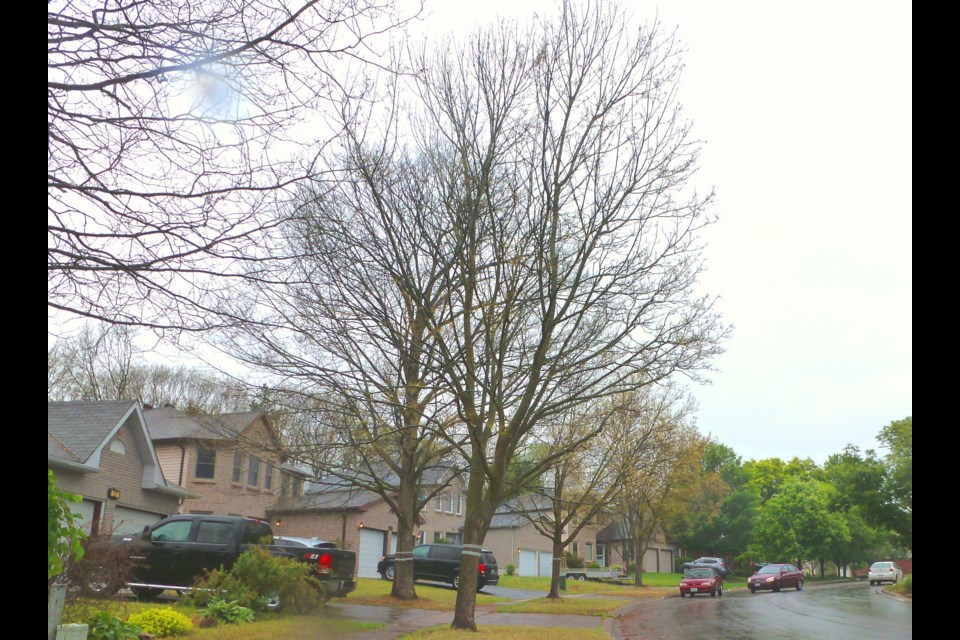By spray or by scent, getting the drop on Barrie’s gypsy moth problem needs a plan.
Councillors will consider a motion Monday night to have city staff investigate the feasibility of aerial spraying or the use of pheromone traps to help prevent future gypsy moth infestations, including the costs, and report back as part of next year’s budget process.
Coun. Robert Thomson says 40 to 50 residents have contacted him about the caterpillars, which can not only strip trees bare of their leaves, but also leave a nasty rash on people’s skin, as their hairs are an irritant.
The gypsy moth was brought to North America in the 1860s from Europe and spread to Ontario about 100 years later.
“If you go down Browning Trail and see all the trees, they’re bare. We’re going to lose a ton of oak trees,” Thomson said of the gypsy moth damage. “I spoke with a woman on Bronte Crescent. The rash got so bad it closed one of her eyes.
“If you go up on Browning Trail or over by Sunnidale, a lot of the residents look like they’ve been rolling around in poison ivy," he added.
Gypsy moths are invasive bugs which feed on tree leaves, destroying tree growth and taking away trees’ ability to produce new leaves. The city’s urban forestry page says the gypsy moths prefer oak, birch, aspen, sugar maple, American beech, eastern white pine, and Colorado blue spruce trees.
Living Green has told BarrieToday it anticipates Simcoe County trees will be severely affected this year. The European gypsy moth has a seven- to 10-year cycle and this year is expected to see a peak in its population.
Thomson’s motion, an item for discussion on Monday’s agenda, would deal with the gypsy moth problem in 2022 and there are plenty of possibilities.
“The ideal solution would be a week or two of minus-25 Celsius with a lot of snow, in the winter, because then they can’t survive,” said the Ward 5 councillor. “That’s why when you get up to Timmins and the permafrost areas, you don’t have this problem. They don’t survive through the winter.”
Aerial spraying of an insecticide might work, but Thomson says it’s expensive — as much as $1 million for the city — and there could be mitigating factors.
“Let’s say you aerial spray on a Thursday and it rains Friday, Saturday, Sunday,” he said. “You’ve sprayed for nothing and that’s my fear.”
Pheromone traps are baited with a synthetic lure which mimics the pheromone released by the female gypsy moth to attract the male. When males enter the trap looking for a female producing the pheromone, they get stuck. But most see pheromone traps as a way of determining the extent of the gypsy moth problem, rather than a solution.
But Thomson says something has to be done.
“People pay taxes and their back yards are uninhabitable,” he said. “They can’t even go out and enjoy them and I just think we’ve got to look into this.”
Thomson said the city has identified three gypsy moth hotspots areas — from the Barrie Landfill to Bayfield Street, Livingstone to Dunlop streets, because of all the wooded area along Ferndale, Sunnidale Park and a section in southwest Barrie.
Thomson even favours a pilot project to help assess what works, and what doesn’t, against gypsy moths.
For more information, visit ontario.ca/page/gypsy-moth.



